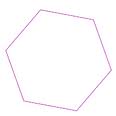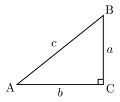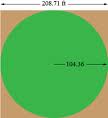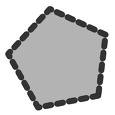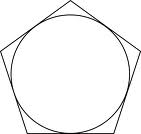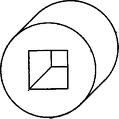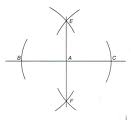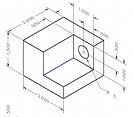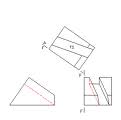Quiz : Nocti Certification For Students
(172).jpg)
We welcome you to this NOCTI certification quiz for students. What does the acronym Nocti mean? How well do you understand the Nocti certification? The quiz below is set to help you revise and prepare for the actual Nocti certification exam. Please make sure to read all the questions carefully before answering. It's important to remember that all the questions are mandatory. There is no time bar, so you can take this quiz as many times as you like. Why not Try the quiz out and see how it goes? Good Luck!
- 1.
Where are individual files located in a computer?
- A.
My computer
- B.
In a folder
- C.
My documents
- D.
C drive
- E.
Thaw space
Correct Answer
B. In a folderExplanation
Individual files in a computer are typically located in a folder. A folder is a storage location that organizes files and other folders in a hierarchical structure. It helps to keep files organized and easily accessible by grouping them together based on their content or purpose. By storing files in folders, users can navigate through the computer's file system and locate specific files more efficiently.Rate this question:
-
- 2.
Plotting from a large format printer you print to what paper?
- A.
Only C
- B.
A and B
- C.
Any size but generally a D and E
- D.
Just E
- E.
Just D
Correct Answer
C. Any size but generally a D and EExplanation
The correct answer is "Any size but generally a D and E." This means that when plotting from a large format printer, you can print on any size of paper, but it is most commonly used with paper sizes D and E.Rate this question:
-
- 3.
When something is being changed on a final design. What do you send? (2 possible answers)
- A.
Addendum
- B.
Make notes on the final design
- C.
Nothing
- D.
A short note
- E.
A revision letter
Correct Answer(s)
A. Addendum
E. A revision letterExplanation
When something is being changed on a final design, you would typically send an addendum or a revision letter. An addendum is a document that adds, modifies, or clarifies information in the original design, while a revision letter is a formal letter that outlines the changes made to the design. Both options serve as a means to communicate the changes effectively and ensure that all parties involved are aware of the modifications.Rate this question:
-
- 4.
What is the minimum width of a hallway?
- A.
3'0"
- B.
2'0"
- C.
25"
- D.
1'
- E.
Unknown
Correct Answer
A. 3'0"Explanation
The minimum width of a hallway is 3'0" because it provides enough space for people to comfortably pass through without feeling cramped or restricted. This width also allows for the passage of furniture or equipment if necessary. Anything narrower than 3'0" may not meet building codes or accessibility standards, potentially causing difficulties for individuals with mobility aids or impairments.Rate this question:
-
- 5.
What is the maximum height of a porch before requiring railing?
- A.
10"
- B.
40"
- C.
30"
- D.
60"
- E.
50"
Correct Answer
C. 30"Explanation
The maximum height of a porch before requiring a railing is typically 30 inches. This is a standard height that is commonly used for safety purposes to prevent falls or accidents. Railing is necessary to provide a barrier and protect individuals from falling off the porch if it is elevated beyond this height.Rate this question:
-
- 6.
If there is no public sewer or water system available, what is the alternative? (2 possible answers)
- A.
Nothing
- B.
Private drain field
- C.
Leach field
- D.
Private well
- E.
French drain
Correct Answer(s)
B. Private drain field
D. Private wellExplanation
If there is no public sewer or water system available, the alternative options are a private drain field and a private well. A private drain field is a system that collects and treats wastewater from a property, while a private well is a source of water that is privately owned and maintained by the property owner. These alternatives provide a means for managing wastewater and accessing water when public systems are not available.Rate this question:
-
- 7.
What is the by code distance between each outlet?
- A.
3"
- B.
10'
- C.
12'
- D.
6'
- E.
15'
Correct Answer
C. 12'Explanation
The given answer, 12', is the correct by code distance between each outlet. This means that there is a 12-foot gap between each outlet.Rate this question:
-
- 8.
What is the maximum distance for a outlet to be from a window or door?
- A.
4'
- B.
10'
- C.
12'
- D.
6'
- E.
3'
Correct Answer
D. 6'Explanation
The maximum distance for an outlet to be from a window or door is 6 feet. This distance is determined by building codes and safety regulations to ensure that electrical outlets are not located too far away from potential exit points in case of emergencies. Keeping the distance within 6 feet allows for easy access to outlets while also maintaining safety standards.Rate this question:
-
- 9.
How many millimeters are in a centimeter?
- A.
4
- B.
1
- C.
10
- D.
11
- E.
5
Correct Answer
C. 10Explanation
There are 10 millimeters in a centimeter. This is because the metric system is based on powers of 10, and there are 10 millimeters in 1 centimeter.Rate this question:
-
- 10.
What is this image?
- A.
Octogon
- B.
Hexagon
- C.
Pentagon
- D.
Star
- E.
Ellispe
Correct Answer
B. HexagonExplanation
This image represents a hexagon. A hexagon is a polygon with six sides and six angles. It is a closed shape with straight sides. The image shows a shape with six sides, which matches the definition of a hexagon.Rate this question:
-
- 11.
What is the hypotenuse?
- A.
A,B
- B.
C,B
- C.
A,C
- D.
BA
- E.
A,C
Correct Answer
A. A,BExplanation
The hypotenuse is the side opposite the right angle in a right triangle. In the given options, A and B are mentioned as the hypotenuse.Rate this question:
-
- 12.
What geometric form is shown?
- A.
Circumscribed circle
- B.
Ellispe
- C.
Inscribed circle
- D.
Oval
- E.
Octogon
Correct Answer
B. EllispeExplanation
The correct answer is "Ellipse". An ellipse is a geometric form that resembles a stretched circle. It is defined as a set of points in a plane, such that the sum of the distances from any point on the ellipse to two fixed points (called foci) is constant. The given form is not a perfect circle or oval, as it has a stretched shape, which matches the characteristics of an ellipse.Rate this question:
-
- 13.
What image is shown?
- A.
Ellispe
- B.
Inscribed circle
- C.
Circumscribed circle
- D.
Cube
- E.
Polygon
Correct Answer
B. Inscribed circleExplanation
The image shown is an inscribed circle. An inscribed circle is a circle that is drawn inside a polygon such that it touches all the sides of the polygon. In this case, the circle is drawn inside a polygon, indicating that it is inscribed.Rate this question:
-
- 14.
What is this shape?
- A.
Octogon
- B.
Polygon
- C.
House
- D.
Hexagon
- E.
Triangle
Correct Answer
B. PolygonExplanation
The given shape is not specifically defined, but it is referred to as a "polygon," which is a general term for any closed figure with straight sides. This term encompasses various shapes, including triangles, squares, hexagons, and octagons. Therefore, the correct answer is "polygon" as it is the most inclusive and general term for the given shape.Rate this question:
-
- 15.
What is a Tangent line?
- A.
An invisable line
- B.
A line that goes around the object
- C.
A line that stays in the object
- D.
A straight line that " just touches" the curve at the point.
- E.
A line that goes all the way through
Correct Answer
D. A straight line that " just touches" the curve at the point.Explanation
A tangent line is a straight line that "just touches" a curve at a specific point. It does not go through the curve or stay within the object, but rather intersects it at a single point. This line represents the instantaneous rate of change of the curve at that point and helps determine the slope or direction of the curve at that particular spot.Rate this question:
-
- 16.
Is this polygon inscribed or Circumscribed?
- A.
Hypotenuse
- B.
Inscribed Circle
- C.
Circumscribed circle
- D.
Ellispe
- E.
Orthographic view
Correct Answer
C. Circumscribed circleExplanation
The correct answer is circumscribed circle. A circumscribed circle is a circle that passes through all the vertices of a polygon. In this case, the polygon is not specified, but since the hypotenuse is mentioned, it can be inferred that the polygon is a right triangle. The circumscribed circle of a right triangle would pass through all three vertices, making it the correct answer.Rate this question:
-
- 17.
44% of 380 feet of a road is already paved. How much is left to be paved?
- A.
167.20 feet has been paved. 212.80 needs to paved.
- B.
100 feet has been paved and 200 to be paved
- C.
166.20 feet has been paved. 213.80 needs to be paved
- D.
80.90 ft has been paved 87.76 needs to be paved
- E.
160.34 ft has been paved 200.98 needs to be paved
Correct Answer
A. 167.20 feet has been paved. 212.80 needs to paved. -
- 18.
What is shown?
- A.
Isometric View
- B.
Oblique View
- C.
Auxiliary View
- D.
Orthographic View
- E.
Perspective View
Correct Answer
D. Orthographic ViewExplanation
The given answer, "Orthographic View," refers to a type of projection in which an object is represented in two-dimensional form, without any perspective or depth. In an orthographic view, all the lines of the object are parallel to the projection plane, resulting in a true and accurate representation of the object's shape and size. This type of view is commonly used in technical drawings, engineering designs, and architectural plans to provide precise and detailed information about the object.Rate this question:
-
- 19.
What is this view?
- A.
Oblique View
- B.
Perspective View
- C.
Unknown View
- D.
Auxiliary View
- E.
Oblique View
Correct Answer
A. Oblique ViewExplanation
The correct answer is Oblique View. An oblique view is a type of pictorial drawing that shows an object in a 3D perspective, where the object is tilted or slanted. It provides a more realistic representation of the object compared to other views. In an oblique view, the object is shown with one face parallel to the picture plane, while the other faces are shown at an angle. This allows for a better understanding of the object's dimensions and proportions.Rate this question:
-
- 20.
If a room was 20'x24' how many sq feet of flooring do you need?
- A.
200.00 sf
- B.
480.00 sf
- C.
400.00 sf
- D.
300.00 sf
- E.
380.00 sf
Correct Answer
B. 480.00 sfExplanation
To calculate the square footage of the flooring needed for a room, you need to multiply the length and width of the room. In this case, the room is 20'x24', so the calculation would be 20 x 24 = 480 square feet. Therefore, the correct answer is 480.00 sf.Rate this question:
-
- 21.
What angle do you use to draw an octogon around a circle?
- A.
180 degree
- B.
55 degree
- C.
80 degree
- D.
45 degree
- E.
90 degree
Correct Answer
D. 45 degreeExplanation
To draw an octagon around a circle, each angle of the octagon must be equal. Since an octagon has 8 sides, the total angle sum of the octagon is 360 degrees. Dividing 360 degrees by 8 gives us 45 degrees, which is the measure of each angle of the octagon. Therefore, to draw an octagon around a circle, we use a 45-degree angle.Rate this question:
-
- 22.
What geographic construction does this drawing show?
- A.
A Compass
- B.
Directions
- C.
Begging of a circle
- D.
Horizontal line
- E.
Perpendicular line
Correct Answer
E. Perpendicular lineExplanation
This drawing shows a perpendicular line. A perpendicular line is a line that intersects another line at a 90-degree angle, forming a right angle. In the drawing, there is a line that intersects another line at a right angle, indicating that it is a perpendicular line.Rate this question:
-
- 23.
What is this image?
- A.
Oblique view
- B.
Perspective view
- C.
Orthographic view
- D.
Isometric view
- E.
Unknown
Correct Answer
D. Isometric viewExplanation
The correct answer is isometric view. An isometric view is a three-dimensional representation of an object where all three axes are equally foreshortened. In this type of view, the object appears to be tilted or rotated, giving a sense of depth and dimensionality. It is commonly used in technical drawings and computer graphics to accurately depict objects in a visually appealing manner.Rate this question:
-
- 24.
Identify this image.
- A.
Orthographic view
- B.
Isometric view
- C.
Auxiliary view
- D.
Oblique View
- E.
Perspective view
Correct Answer
C. Auxiliary viewExplanation
An auxiliary view is a projection view that is used to show a specific feature or details of an object that are not easily visible in the standard orthographic or isometric views. It is typically used when there is a need to show the true size and shape of an inclined or oblique surface. In this image, the view shown is not a standard orthographic or isometric view, but rather a view that provides additional information about the object, making it an auxiliary view.Rate this question:
-
- 25.
What is the most efficient use of plumbing fixtures-location on a single or multiple walls?
- A.
Multiple wall.
- B.
They don't require plumbing above each other
- C.
Single wall. If 2 story locate rooms requiring plumbing above each other.
- D.
They only need double
- E.
Unknown
Correct Answer
C. Single wall. If 2 story locate rooms requiring plumbing above each other.Explanation
The most efficient use of plumbing fixtures is to locate them on a single wall when there are two-story rooms requiring plumbing above each other. This is because placing the fixtures on a single wall allows for a more streamlined and direct plumbing system, reducing the need for additional plumbing infrastructure and potential complications. By locating the fixtures on a single wall, the plumbing can be easily connected vertically, minimizing the amount of piping required and optimizing efficiency in the plumbing system.Rate this question:
-
- 26.
Which of the following tools is used to measure the depth of a drilled hole?
- A.
Micrometer
- B.
Depth gauge
- C.
Caliper
- D.
Try square
Correct Answer
B. Depth gaugeExplanation
A depth gauge is a precision tool used to measure hole depth. It has a graduated rule and a sliding blade. A micrometer measures external dimensions, calipers measure internal and external dimensions, and a try square checks 90-degree angles. Depth gauges are essential in fields like machining and woodworking for ensuring accurate hole depths.Rate this question:
-
- 27.
Concrete Calculations: How many sq yards of concrete are there in an area measuring 20'x20'x4"? Multiply length x width x depth (cubic feet). then divide cubic feet by 27 (cubic yards). keep in mind, that you must work in the same units, all feet or all inches.
- A.
9.84 cubic yards
- B.
6.60 cubic yards
- C.
5.00 cubic yards
- D.
4.98 cubic yards
- E.
4.89 cubic yards.
Correct Answer
E. 4.89 cubic yards.Explanation
The correct answer is 4.89 cubic yards because the question asks for the number of square yards of concrete in an area measuring 20'x20'x4". To calculate this, we need to find the volume of the area in cubic feet by multiplying the length, width, and depth. Then, we divide the volume in cubic feet by 27 to convert it to cubic yards. By performing these calculations, we find that the area contains 4.89 cubic yards of concrete.Rate this question:
-
- 28.
Identify this view.
- A.
Isometric View
- B.
Orthographic View
- C.
Perspective View
- D.
Oblique View
- E.
Auxiliary View
Correct Answer
C. Perspective ViewExplanation
Perspective view is a type of drawing or representation that shows objects as they appear in three dimensions, with objects appearing smaller as they recede into the distance. This view is created using a vanishing point and converging lines to give the illusion of depth and distance. It is commonly used in art, architecture, and design to create a realistic and lifelike representation of a scene or object.Rate this question:
-
- 29.
What are the dimensions of the following sheet sizes: A,B,C,D and E
- A.
A=8x11, B=12x18 or 11x17, C=18x24, D=24x36, E=36x48
- B.
A=8x11, B=12X18, C=12x36, D=24x36, E=36x48
- C.
A=11x17, B=12x18 or 8x11, C=24x36, D=18x24, E=36x48
- D.
A=24x36, B=18x24, C=36x48, D=12x18 E=8x11
- E.
A=36x48, B=24x36, C=8x11, D12x18, E=18x24
Correct Answer
A. A=8x11, B=12x18 or 11x17, C=18x24, D=24x36, E=36x48Explanation
The correct answer provides the dimensions for each sheet size. A is 8x11, B is either 12x18 or 11x17, C is 18x24, D is 24x36, and E is 36x48.Rate this question:
-
- 30.
How do you know the elevation around a house?
- A.
Looking at a site plan only
- B.
You have to get on a plane and watch from above
- C.
Only a site plan
- D.
Contours on a topographic map or site plan
- E.
There is no way
Correct Answer
D. Contours on a topographic map or site planExplanation
The correct answer is "Contours on a topographic map or site plan." This is because contours are lines on a map that connect points of equal elevation. By studying these contours, one can determine the elevation around a house or any other location. A site plan or a topographic map will typically include these contour lines, making them essential tools for understanding the elevation of an area.Rate this question:
-
- 31.
Water line symbol & Sanitary sewer line symbol.
- A.
Only WL then dashed lines before the dashes. Two S between each dash.
- B.
Unknown
- C.
Dashed line with a W &/or WL letters between dashes. dashed line with a S &/or SL letters
- D.
2 Dashed lines with W in between each. Use a Phantom line with SL letters.
- E.
You just lable it with W and S
Correct Answer
C. Dashed line with a W &/or WL letters between dashes. dashed line with a S &/or SL lettersExplanation
The correct answer is to use a dashed line with a W and/or WL letters between the dashes for water line symbol, and a dashed line with a S and/or SL letters between the dashes for sanitary sewer line symbol. This is the standard convention for representing these symbols in technical drawings and blueprints.Rate this question:
-
- 32.
What is this?
- A.
Unknown
- B.
Dead End street.
- C.
Half circle
- D.
Cul-de-sac
- E.
A park and ride
Correct Answer
D. Cul-de-sacExplanation
A cul-de-sac is a dead-end street that is typically in the shape of a half circle. It is designed to allow vehicles to turn around at the end of the street without having to back up or make a U-turn. This type of street is often found in residential areas and provides a safe and quiet environment with limited through traffic.Rate this question:
-
- 33.
Grade away from a house...Dist?
- A.
Drop of 10' every 6'
- B.
Drop of 59' every 20'
- C.
Drop of 30' every 10'
- D.
Drop of 3' every 5'
- E.
Drop of 6' every 10'
Correct Answer
E. Drop of 6' every 10'Explanation
The correct answer is "Drop of 6' every 10'". This means that for every 10 feet of distance away from the house, there is a drop of 6 feet in elevation.Rate this question:
-
- 34.
What is a "Parapet"?
- A.
A low wall projecting from the edge of a platform, terrace, or roof
- B.
A part of the floor
- C.
Parts of a Roof that goes low
- D.
Unknown
- E.
The fist part of the wall that is built
Correct Answer
A. A low wall projecting from the edge of a platform, terrace, or roofExplanation
A parapet is a low wall that extends from the edge of a platform, terrace, or roof. It serves as a protective barrier and helps to prevent people from falling off the edge.Rate this question:
-
- 35.
What does a Site Plan contain?
- 36.
What are some items found on a title sheet or cover sheet?
- 37.
What is this section cut out of? (2 possible answers)
- A.
Sill plate
- B.
Wall section
- C.
Sole plate
- D.
Diagram of a Labled wall
- E.
Unknown
Correct Answer(s)
A. Sill plate
C. Sole plateExplanation
The correct answer is Sill plate, Sole plate. In construction, a sill plate is a horizontal member that is attached to the top of a foundation wall, providing a base for the vertical wall studs. A sole plate, on the other hand, is a horizontal member that is attached to the bottom of the wall studs, providing a base for the vertical load distribution. Both the sill plate and sole plate play important roles in the structural integrity and stability of a building.Rate this question:
-
- 38.
Which of the following is NOT a type of refrigerant used in HVAC systems?
- A.
Chlorofluorocarbons (CFCs)
- B.
Hydrochlorofluorocarbons (HCFCs)
- C.
Hydrofluorocarbons (HFCs)
- D.
Polychlorinated biphenyls (PCBs)
Correct Answer
D. Polychlorinated biphenyls (PCBs)Explanation
Polychlorinated biphenyls (PCBs) are industrial chemicals that were once used in a variety of applications, including electrical transformers and capacitors. They are highly toxic and have been banned in many countries due to their environmental and health risks. CFCs, HCFCs, and HFCs are all types of refrigerants that have been used in HVAC systems. CFCs were phased out due to their ozone-depleting properties, and HCFCs are being phased out due to their high global warming potential. HFCs are currently the most common type of refrigerant used in new HVAC systems.Rate this question:
-
- 39.
Queen Anne is an example of what style of house?
- A.
Cape cod Style
- B.
20th Century
- C.
A-Frame Style
- D.
Craftsman Style
- E.
Victorian Era Style
Correct Answer
E. Victorian Era StyleExplanation
Queen Anne is an example of Victorian Era Style. The Queen Anne style of architecture emerged during the Victorian era and was popularized in the late 19th century. It is characterized by its asymmetrical design, decorative details, and ornate features such as turrets, bay windows, and elaborate woodwork. Queen Anne houses often have a variety of exterior materials, vibrant colors, and multiple rooflines. This style represents the opulence and grandeur of the Victorian era and is named after the reign of Queen Anne in England.Rate this question:
-
- 40.
Who gives the final approval for a Submittal?
- A.
Just the Owner
- B.
Contactor
- C.
Owner, government (Building Officials)
- D.
Only the Building Officials
- E.
When your done that's it
Correct Answer
C. Owner, government (Building Officials)Explanation
The final approval for a Submittal is given by the Owner and the government, specifically the Building Officials. This means that both the Owner of the project and the government authorities responsible for overseeing the construction process have to review and approve the Submittal before it can proceed. The Contractor alone does not have the authority to give the final approval.Rate this question:
-
- 41.
Where does the sun hit the house more frequently?
- A.
North
- B.
East
- C.
South
- D.
West
- E.
Northsouth
Correct Answer
C. SouthExplanation
The sun hits the house more frequently in the South. This is because the sun rises in the East and sets in the West, so throughout the day, the sun will be positioned more towards the South. As a result, the South side of the house will receive more direct sunlight and exposure to the sun's rays.Rate this question:
-
- 42.
This Code Defines Handicapped Dimensions (sinks, etc) in a building.
- A.
F.D.A
- B.
A.D.A
- C.
G.F.I.C
- D.
B.O.M
- E.
A.N.S.I
Correct Answer
B. A.D.AExplanation
The correct answer is A.D.A, which stands for Americans with Disabilities Act. This act is a civil rights law that prohibits discrimination against individuals with disabilities and ensures equal opportunities in various aspects, including access to public buildings and facilities. The given code is likely defining the dimensions and specifications for handicapped-accessible features such as sinks in a building, in compliance with the ADA guidelines.Rate this question:
-
- 43.
What Architectural style was similar to that of Frank Lloyd Right?
- A.
Usonian Architectural Style
- B.
Victorian Style
- C.
Saltbox Style
- D.
American Federal
- E.
Queen Anne
Correct Answer
A. Usonian Architectural StyleExplanation
The correct answer is Usonian Architectural Style. Usonian architecture was developed by Frank Lloyd Wright and is characterized by its integration with nature, use of natural materials, open floor plans, and emphasis on functionality and simplicity. This style was primarily used for residential buildings and aimed to create affordable and practical homes for middle-class Americans. Wright's designs often featured flat roofs, cantilevered overhangs, large windows, and open living spaces. Usonian architecture was a departure from the ornate and elaborate Victorian and Queen Anne styles that were popular during the same time period.Rate this question:
-
- 44.
What type of house was created by Frank Lloyd Right?
- A.
Tudor and English
- B.
A-Frame
- C.
Usonion
- D.
Prairie Style Architecture
- E.
American Colonial
Correct Answer
D. Prairie Style ArchitectureExplanation
Frank Lloyd Wright was a renowned American architect known for his innovative designs. He is credited with creating the Prairie Style Architecture, which was characterized by low horizontal lines, open floor plans, and integration with the surrounding landscape. This style emphasized simplicity, functionality, and a harmonious relationship between the building and its environment. Wright's Prairie Style Architecture became influential and had a lasting impact on American residential design.Rate this question:
-
- 45.
What line type do you use for a foundation plan?
- A.
Continuous and dashed
- B.
Dashed
- C.
Phantom
- D.
Small Dashed
- E.
Two lines of continuous
Correct Answer
A. Continuous and dashedExplanation
A foundation plan is a detailed drawing that shows the layout and dimensions of the foundation of a building. It typically includes information about the walls, footings, and other structural elements. The use of continuous and dashed lines is common in foundation plans to differentiate between different types of elements. Continuous lines are used to represent visible and solid objects, such as walls, while dashed lines are used to represent hidden or non-visible elements, such as footings or underground pipes. This combination of line types helps to clearly communicate the different components of the foundation plan.Rate this question:
-
- 46.
What should a Wall Section include?
- 47.
What are some examples of Soft Wood and Hard Wood?
- 48.
Trusses are generally Spaced how far apart?
- A.
24"
- B.
30"
- C.
25"
- D.
20"
- E.
40"
Correct Answer
A. 24"Explanation
Trusses are generally spaced 24" apart. This spacing is important for providing proper support and stability to the structure. It ensures that the weight and load are distributed evenly across the trusses, preventing any sagging or structural damage. Additionally, a 24" spacing allows for efficient installation and cost-effectiveness in terms of materials and labor.Rate this question:
-
- 49.
Where is a stringer located?
- A.
Under the stairs
- B.
Roof
- C.
With the foundation of the house
- D.
In a Wall section
- E.
On a second floor of a house
Correct Answer
A. Under the stairsExplanation
A stringer is typically located under the stairs as it provides support and stability to the staircase structure. It is a structural component that runs along the length of the stairs and supports the treads and risers. Placing the stringer under the stairs ensures that the staircase remains sturdy and safe for use.Rate this question:
-
- 50.
The R Value on insulation means that it's _.
Correct Answer
High
QuailityExplanation
The R Value on insulation means that it has a high quality. The R Value is a measure of the insulation material's ability to resist heat flow. A higher R Value indicates that the insulation is more effective in preventing heat transfer, which means it has better quality insulation.Rate this question:
Quiz Review Timeline +
Our quizzes are rigorously reviewed, monitored and continuously updated by our expert board to maintain accuracy, relevance, and timeliness.
-
Current Version
-
Jan 08, 2025Quiz Edited by
ProProfs Editorial Team -
May 20, 2010Quiz Created by
Kcapasso
 Back to top
Back to top



